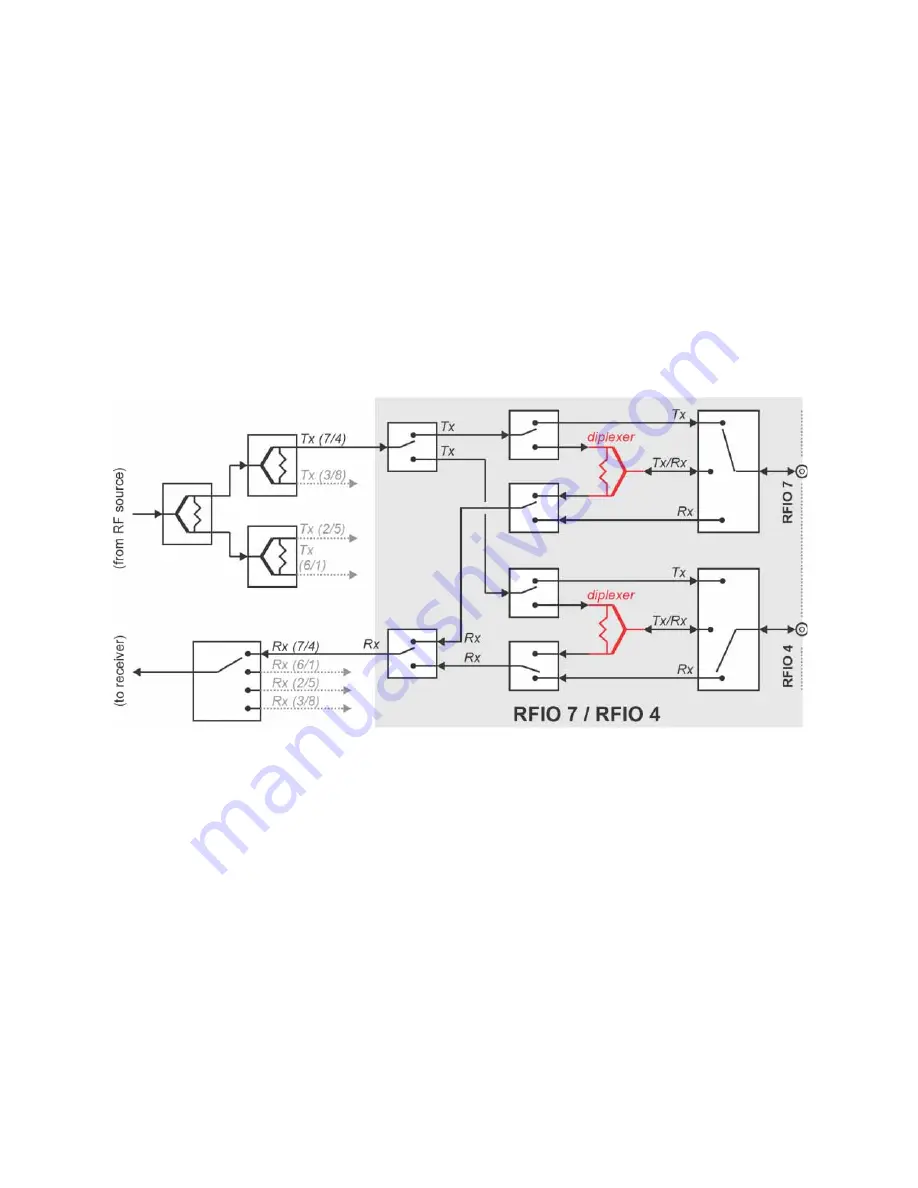
68 Getting Started Guide
Operating Tasks
Port Configuration
Port usage
Because the RF source sends signals to the ports through splitters, while the
analyzer receives signals from the ports through a switch, the same signal can
be sent simultaneously to as many as four ports, while only one port at a time
can send back a signal to the analyzer.
The RFIO ports of each TRX consist of four pairs of ports which are functionally
related because of the receiver-path switches they share. In the example
below, the RF matrix for RFIO 4 and RFIO 7 is shown. An identical RF matrix is
provided for the other three pairs: 6 and 1, 2 and 5, 3 and 8. Examples in the
following pages show only 4 and 7, but the same could be done for the other
three pairs in each case.
Figure 5-12
Paired ports (RFIO 4 and RFIO 7)
The pairing of ports in this way places some restrictions on how they are used;
see
“Port combinations for paired ports” on page 69
.
RF power in full duplex mode
Any port can be used in full duplex mode (Tx/Rx in the diagram above), by
setting the same port as an input and an output. Because of the diplexer path
used in full duplex mode (highlighted in red in the diagram), there is a power
loss of about 5 dB, compared to half-duplex mode. For this reason, full duplex
mode is only recommended in situations where it is acceptable to compromise
on maximum RF output power (in transmit mode) and low-end sensitivity (in
receive mode).
















































